Aborigines, indigenous people, first nations are all people who have existed in peace living hand in hand with nature, climate and habitat. And are to be found in the most remote locations on this planet earth. Common to them all wherever they live is that they have all been oppressed, exploited, cheated, tricked and abused by other human invaders. They have all been forced to blend with new colonization and those who abided would survive while those who oppose would perish.
Ever since Christopher Columbus sailed westward in 1492 to discover a new waterway to Asia and stumbled upon the Americas the exodus of the European seafarers commenced in seeking prospect of gold and other riches and found them invading those already there.
The first nations or the inhabitants of North America were called Indians by these European settlers who at first sort there help in a very lucrative fur trade that existed in the Europe. The natives lived off the ground resourcing themselves through the fauna and flora of the plains the Prairies. The large herds of Buffalo [Bison] in the plains and other creatures as Elk and the Moose were revered by them for without them the Indian would not survive the extreme climates in this otherwise barren landscape.
Monument to signify the signing of the ‘Treaty Six in 1876’ erected in Saskatoon
Bison reared in ranches will be released in the Wanuskewin Plains soon
The European settlers who intermixed with the natives developed a descent by the name Métis. They became the trappers and the middle men in this fur trade that had a tremendous demand. However with the European markets being saturated of the beaver and other small animal fur the prices declined bringing a shift for Bison fur and hide. Unlike the sustained harvesting of the Bison by the natives through their primitive ways….. the introduction of guns and ammunition to the plains found large herds of Bison destroyed in a very short time bringing an end to the trade as well the Bison almost to extinct.
With time the better relation had with the natives was to end with the diminishing fur trade, and in return their land was grabbed for farming with rail roads opened for transport of produce and new townships created for living.
Prairie plains opened up for farming
As always…. once having destroyed a civilization altogether one comes to realize of the importance and how them, the indigenous people managed the land and the environment. We then feel the need to go back to the beginning and start preserving the very meager remainder of the destroyed.
Wanuskewin Heritage Park
Facility center at Wanuskewin Heritage Park
The Wanuskewin Heritage Park in Saskatchewan Canada is one such place where the lifestyle and the habits of the indigenous Indians are reviewed and revived for the present generations. Wanuskewin has been a location frequented by these first nations every year for bison hunts and collection of herbs etc; until the ‘Treaty Six’ was signed in 1876, taking the land off them completely, when the occupation of Wanuskewin by the First Nations peoples ended.
Taxidermy of Bison and Bison by products in Tipi house are on display
Today the center has re-enacted the life styles of the first nations with actual ‘Tipi’ houses their abodes done in canvas for the visitor to camp out and experience the simple lifestyle of these first nations. Interpretation of their song and dance by the present generations is also enacted; of course with certain doubt of its true form. The present performance and their outfit is definitely far from what it would have been then……but how they set about their affairs could still be presumable with these museum displays.
Re enacting the dance of the Indian by a Chinese lady – attired in Chinese silks
Tipi available for overnight camping & Bison bone used to secure Tipi enclosure
Module of a stampede luring the Bison to leap into an escarpment to hunt them down
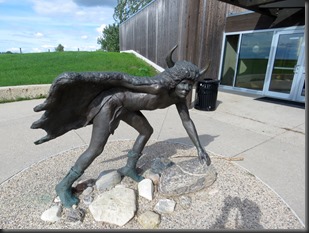

Men covered in Bison hides approach the herds for the chase while the women folk wave blankets directing them to the escarpment
- Meat - roasted on the campfire, boiled for pemmican and jerky, sausages
- Hides with the hair left on - winter clothing, gloves, blankets, robes, costumes for ceremonies or for hunting.
- Hides - ropes, blankets, shields, clothing, moccasins, bags, tipi covers, bull boats, containers, drums, winter counts
- Sinew [muscles] - bowstrings, thread for sewing, webbing for snowshoes, attaching arrowheads
- Bones - for making hoes, shovels, runners for sledges, pointy tools, knives, pipes, scrapers, arrowheads, game dice
- Horns - spoons, cups, bowls, containers to carry tobacco, medicine or gunpowder, headdresses, arrow points, toys
- Hair - rope, pillow stuffing, yarn, shields, medicine balls
- Beard - decoration on clothes and weapons
- Tail - fly swatter, whip, tipi decoration
- Brain - used for preparing the hides (to soften the skin)
- Hoofs - rattles, boiled to make glue
- Fat - paint base, hair grease, for making candles and soap, used for making pemmican
- Dung - fuel for campfires and smoke signals
- Teeth - for decorating, necklaces
- Stomach - containers for water and for cooking
- Intestines - storage containers, used for making sausage
- Bladder - medicine bag, water container, pouches
- Skull - ceremonies and prayer.
http://www.aitc.sk.ca/saskschools/firstnations/bison.html
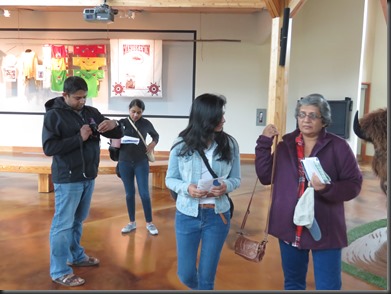
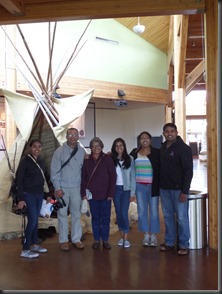
Visitors at the center
Nature walks around the center
The center has developed nature walks around the vicinity highlighting points and locations of interest and models of Bison on the plains and the means and the method how they were hunted.
Wild flowers on the plains
A project is underway to reintroduce the Bison in the Wanuskewin plains. They are now reared in ranches under scientific study from the very small numbers that survived in captivity.
A solitary rock sits out in the plains and is smoothed from Bison rubbing against it
It is a pity that the surviving First Nations themselves have turned out to be exhibits today. They feel it is an easy way out making a living posing for photographs for a fee. This is even when they are exempted from the heavy taxation that other nationals have to meet up with when living in Canada today.

The Natives are now exhibits
Waskesiu Wilderness Region
Waskesiu is yet another location now in the Prince Albert National Park, in Saskatchewan Canada where once the native Indians roamed about as hunter gatherers. Today it is a safe haven for the Elk, the Bear and other wild-life…. and is also a sought after summer retreat for the present generation in Saskatchewan and the British Colombia in Canada.
Elk in the Park is preserved
Waskesiu a summer retreat today


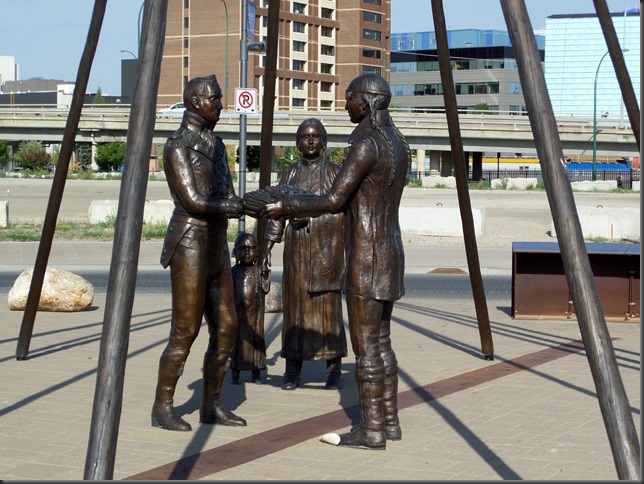


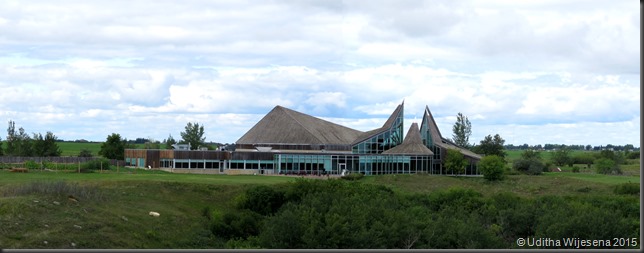

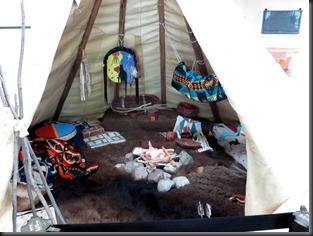


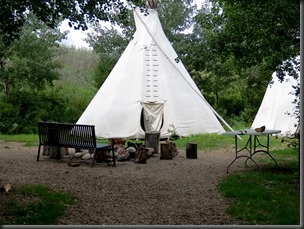
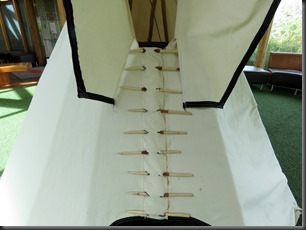
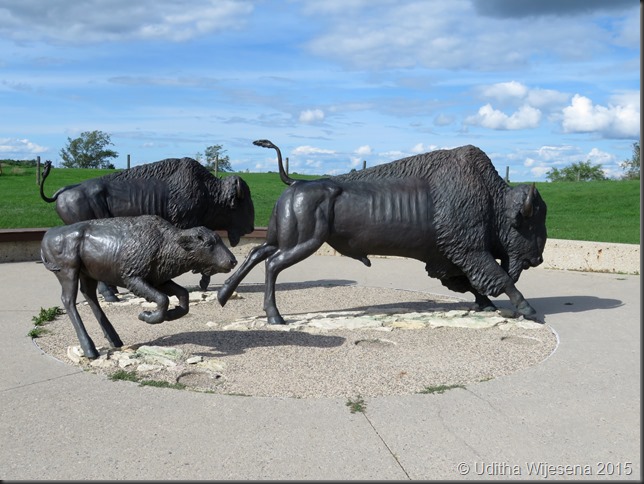
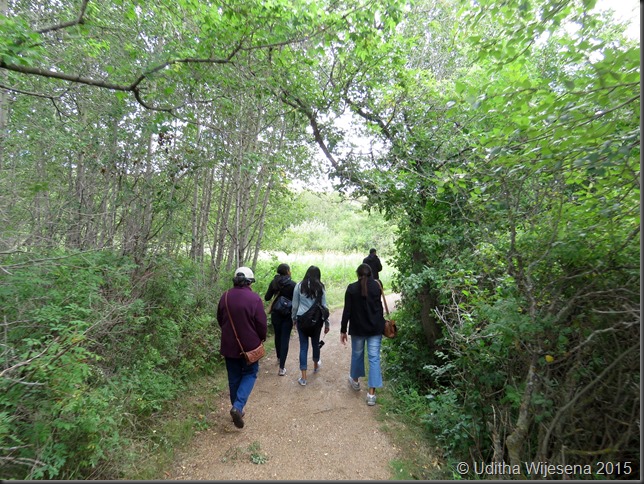
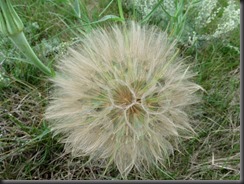

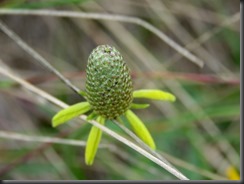
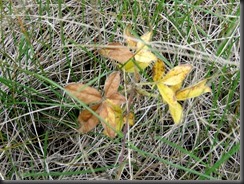

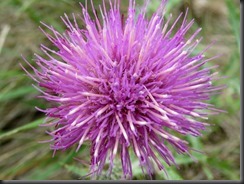

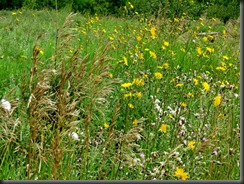

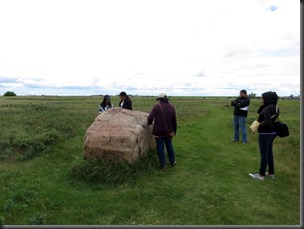
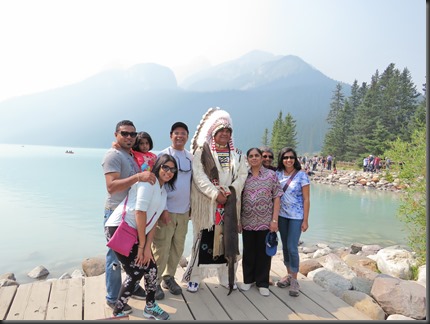

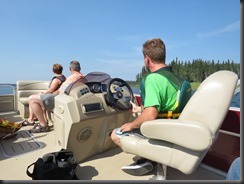
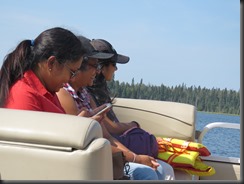
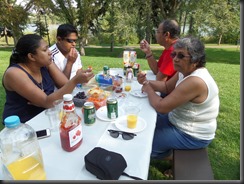
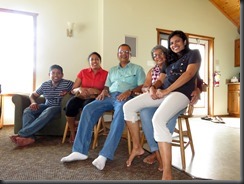
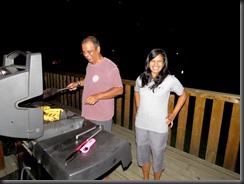

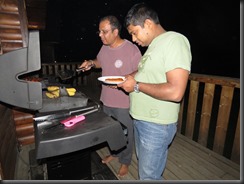

No comments:
Post a Comment